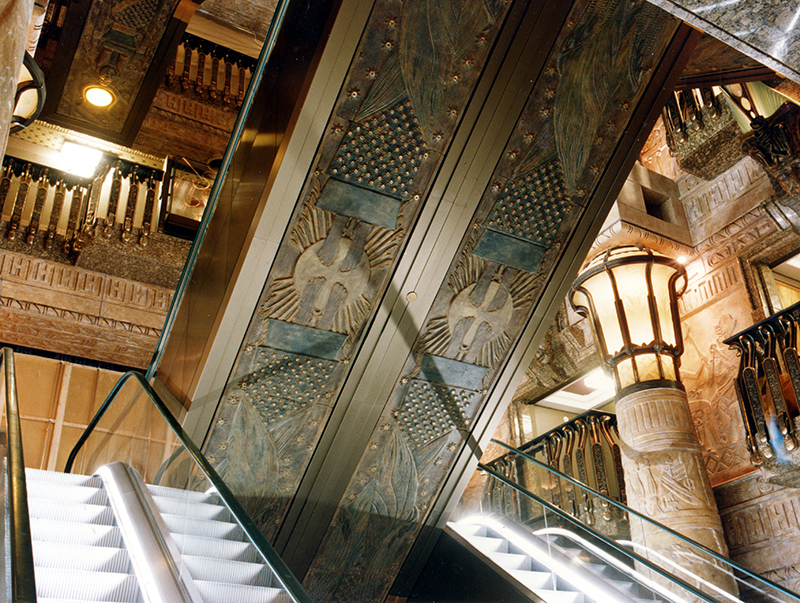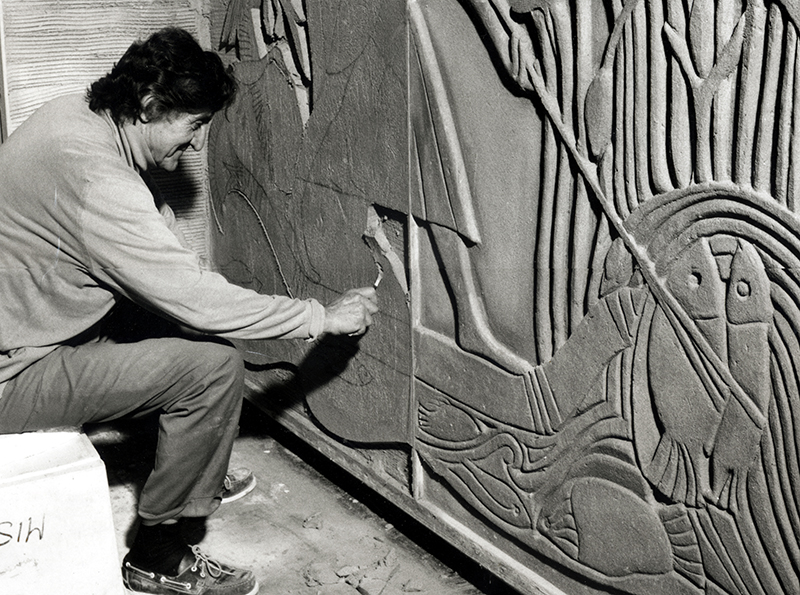Photo: © helinntonfantin/123RF.com

News | April 2024
The Spaniards are coming
Do the Big 4 have to get ready for expansion? A company transaction largely unnoticed by the public now points to this.

Following their completion in 1997: the second Egyptian world and their escalators. (Photo: © William Mitchell)
March 2018
The ancient Egyptians move people to this day. Egyptomania was the name of the phenomenon that in the 1990s also took possession of Harrod's in London.
The artist who then decorated the rooms and escalators was William Mitchell, who had become famous in the 1960s and 1970s with his large scale abstract sculptures and reliefs and who had admired ancient Egyptian art since he had been a student.
His patron was Mohammed Al-Fayed, an Egyptian who had bought Harrods in 1985. Al-Fayed liked Mitchell, who was to work for the businessman as designer for a long time: first in the Paris Ritz, which Al-Fayed had bought in 1979 and then at Harrods.
The department store, founded in 1834 and located in upmarket Knightsbridge since 1849, is a British institution. Al-Fayed converted it at short notice into a private shrine when he had a monument erected to his son Dodi and his lover princess Diana. Both had died in a car accident in 1997.
For this, Mitchell created a cenotaph with portraits of the lovers and the wine glass that Diana’s red lips had visibly touched during their last dinner at the Paris Ritz – expensive kitsch, which visitors encountered at the end of their trip through the Egyptian escalator with its elaborately decorated escalators.
 Al-Fayed wanted to honour the culture of his country with the elaborate decoration, which endowed the department store with new attractions and optimised the flow of visitors to the benefit of the turnover. This was how the plan for the first Egyptian world came about at the Brompton Road entrance.
Al-Fayed wanted to honour the culture of his country with the elaborate decoration, which endowed the department store with new attractions and optimised the flow of visitors to the benefit of the turnover. This was how the plan for the first Egyptian world came about at the Brompton Road entrance.
The Egyptian hall, which took shape in 1991–92 and which Mitchell saw as an enormous challenge. He, the admirer of the naturalistic, colourful art of the eighteenth dynasty and its pharaoh, Echnaton, was to work with the same vigour and artistic ability as the artists he honoured over 3,000 years before.
By connecting rooms on the ground floor and first floor, Mitchell created the "Egyptian Hall" with almost 8 m high pillars, reached via the attractive escalators. Visitors were to be overwhelmed: by the facsimile reliefs presenting Egyptian life, sphinxes, fan-shaped lights on slender bronze pillars, elegant showcases and the light…
Mitchell’s second Egyptian project came several years later, at the cost of 21 million pounds and realised by the building group Norwest Holst. In 1996-97, the seven-storey atrium on the Hans Crescent Street was remodelled by the artist as walk-in sculpture: since then, the pillars and walls bear reliefs of Egyptian warriors and their chariots.
The conveyance technology was also upgraded: the group of six lifts installed in 1927-28 were removed, being replaced by escalators that transported thousands of visitors daily between the first floor (shoes, socks, Dodi & Di) and the fifth floor ("Harrod’s Shoe Haven") and thereby – in Mitchell’s concept - between the Upper and Lower Nile. The undersides of the escalators also bore reliefs of the goddess Isis as ruler of the world.
 Mitchell was proud to note that English Heritage had included his concept worlds in its list of cultural monuments worthy of preservation. It remains to be seen whether they are actually works for posterity, as he hopes. Harrods is after all devoted to consumption rather than to culture. And that’s something to which monuments have to take second place.
Mitchell was proud to note that English Heritage had included his concept worlds in its list of cultural monuments worthy of preservation. It remains to be seen whether they are actually works for posterity, as he hopes. Harrods is after all devoted to consumption rather than to culture. And that’s something to which monuments have to take second place.
In 2005, Mitchell created a 3 m high bronze Dodi-&-Di sculpture, together with the British artist Douglas Jennings. It inscription, "Innocent Victims" amounted to an accusation of the British royal family, which in Al-Fayed’s view was behind the death of the lovers – which is why the current owner wants to have the statue shipped to the Al-Fayed family in Egypt in the hope of reacquiring the status of purveyor to the court.
The Dodi & Di cenotaph will make the same journey with which the Al-Fayed episode will finally pass into history. What will remain are the Egyptian worlds and their escalators, which will also continue to spur on the consumers' interest in buying.
Oliver Züchner, Hanover
Write a comment